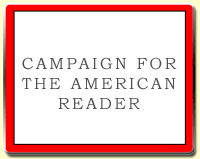 Mauro Javier Cardenas's debut novel, The Revolutionaries Try Again, happens to have a number of very long sentences. One of nine novels he loves, all which have some very long sentences, as shared at Publishers Weekly:
Mauro Javier Cardenas's debut novel, The Revolutionaries Try Again, happens to have a number of very long sentences. One of nine novels he loves, all which have some very long sentences, as shared at Publishers Weekly:To the Lighthouse by Virginia WoolfRead about the other entries on the list.
I used to read as if searching for rooms that would lead to my own room, La Baba Que Ama, and although Borges and Cortázar opened the door to the first room, The Possibilities of Fiction, To The Lighthouse by Virginia Woolf opened the door to the second one, The Performance of Interiority, starting with James Ramsay, who, upon hearing his mother say sure, they’ll go to the lighthouse if it’s fine tomorrow,becomes so excited Woolf performs his interior reaction by telling us that since he belonged, even at the age of six, to that great clan which cannot keep this feeling separate from that, but must let future prospects, with their joys and sorrows, cloud what is actually at hand, since to such people even in earliest childhood any turn in the wheel of sensation has the power to crystallize and transfix the moment upon which its gloom or radiance rests, James Ramsay, sitting on the floor cutting out pictures from the illustrated catalogue of the Army and Navy stores, endowed the picture of a refrigerator, as his mother spoke, with heavenly bliss.
To the Lighthouse appears among Rachel Cusk's six favorite books, Helen Dunmore's six best books, Annie Baker's six favorite books, Meg Wolitzer's five favorite books by women writers, Laura Frost's top 10 best modernist books, the Barnes & Noble Review's list of five unforgettable fathers from fiction, Margaret Drabble's top ten literary landscapes, the American Book Review's 100 best last lines from novels, Amity Gaige's best books, and Adam Langer's best books.
--Marshal Zeringue



